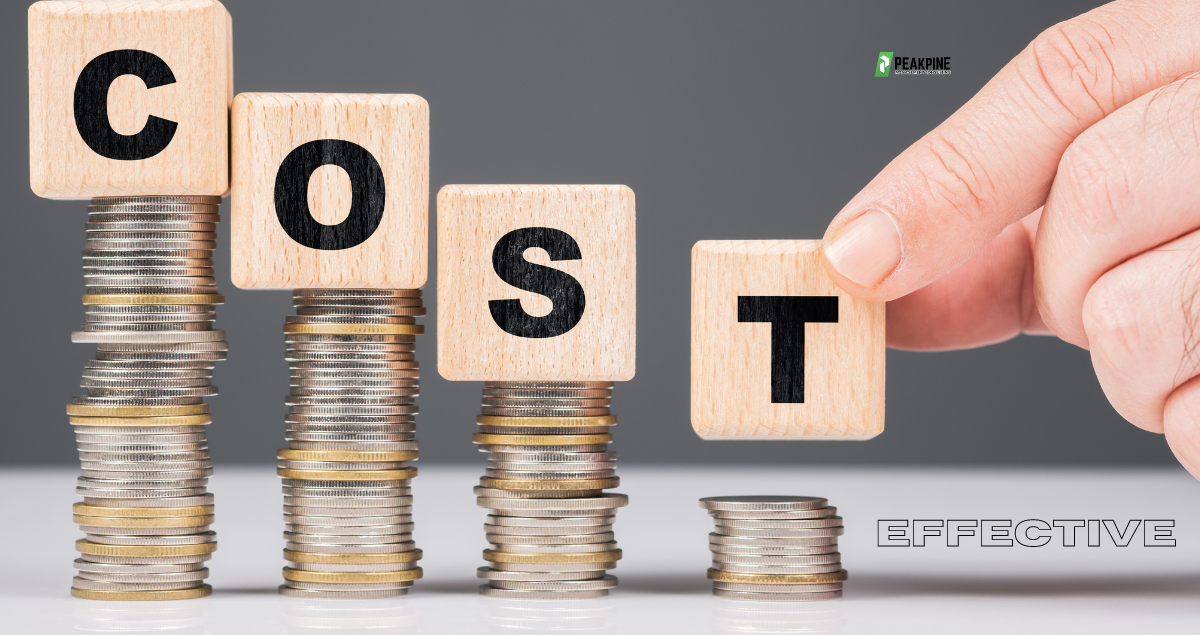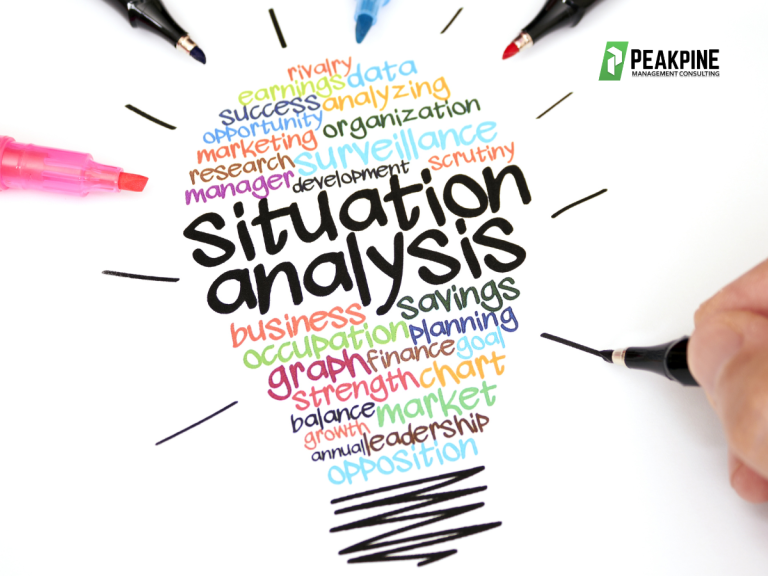Peakpine Solutions Team
Businesses typically aim to maximize profit while minimizing resource usage throughout their operations in order to deliver value to customers efficiently. Given the constraints of limited resources, every dollar spent must be optimally spent to ensure the sustainability of the business. This scarcity of resources necessitates the adoption of strategies to eliminate waste and prevent any financial losses. As a result, the lean methodology has emerged as a fundamental approach for businesses to operate efficiently and effectively.
The concept of lean methodology in business emphasizes creating value for customers by utilizing resources efficiently and optimizing processes to meet customer demands. This approach aims to allocate resources only to areas of the business that contribute directly to value creation and capture.
Any processes that do not directly add value are considered wasteful. By preventing waste in terms of time, effort, and capital at every stage of the business process, the lean approach is focused on streamlining operations. This involves reviewing all aspects of processes and eliminating any unnecessary or non-value-adding activities.
A vital aspect of the lean methodology is identifying value from the customer’s perspective. For instance, in the context of a subscription-based business like Netflix, providing customers with seamless access to its online platform is an example of value to a customer. On the other hand, for a product-based business, the value may lie in enabling customers to purchase products at their convenience. Therefore, any processes that do not contribute directly to generating value as perceived by the customer are eliminated in the lean methodology.
An illustration of inefficiency is the decision to lease office space for a Saas company during the initial stages of business development. While the office space may have its benefits, it does not directly contribute to the creation of value for the customer. The optimization of business processes will need to be a gradual and ongoing effort, with improvements closely tied to the company’s growth trajectory.
The lean methodology involves identifying value based on customer needs, comprehending the value creation process, and ensuring a seamless, waste-free process that prioritizes revenue generation. This approach guarantees that resources are allocated towards revenue-generating activities like sales and marketing.

For instance, a startup would be right to invest significantly in sales and marketing for a tested and validated product or service, as the returns on such investment would yield value for such a company.
Wastes in the lean methodology include overproduction, defective products, transportation, overprocessing, excess inventory, and time wastage. The goal is to maximize efficiency, reduce costs, and improve customer satisfaction. Overproduction leads to excessive inventory and product obsolescence. Defective products cause rework, complaints, and potential harm. Quality control and defect prevention are crucial.
Transportation waste is the unnecessary movement of materials or goods, leading to extra time and costs. Streamlining logistics can reduce these inefficiencies. Overprocessing waste is an unnecessary step in manufacturing, wasting time and resources. Companies can eliminate these activities through process analysis.
Excess inventory wastes capital and blocks potential investments. Just-in-time systems and supply chain optimization minimize inventory while ensuring timely delivery. Efficient production planning, scheduling, and payment processing eliminate delays and improve time management. Companies can enhance their competitiveness, reduce costs, and provide higher customer value by eliminating waste.
Unit Economics
Unit Economics is a valuable business tool utilized to optimize resources within a company. This metric focuses on the quantifiable aspects that generate value for the organization. Specifically, it aids in calculating the profit and loss associated with a particular business model on a per-unit basis. To provide an example, in the case of Netflix, unit economics would be synonymous with the amount of money a customer spends, with each customer considered as one unit. Similarly, for a supermarket, the total purchases made by a single customer would embody a unit in terms of unit economics analysis.
When it comes to SaaS companies offering software solutions to both B2B and B2C customers, it is essential to clearly define the unit economics. This is crucial because significant purchases made by B2B customers for their employees can be viewed either as individual transactions within the business client or as a collective purchase for the entire organization.
While this may seem confusing, based on marketing that brought in both the B2B and B2C clients, both types of customers should be counted as single units. To determine the unit economics of your business, two concepts used are customer lifetime value and customer acquisition costs.
Customer lifetime value is the accumulated sum of money that a customer spends with a company until they cease doing business with them. For example, if a customer buys 5 Mercedes cars within a span of 2 years, each priced at 4 million dollars, and then switches to purchasing Toyota vehicles, their lifetime value to Mercedes amounts to 12 million dollars once they have churned.
Customer acquisition cost refers to the amount spent on attracting clients to your business. Broadly speaking, it refers to what you spend on marketing and sales to get clients for your business. The customer acquisition cost is obtained by dividing the amount spent on marketing and sales by the number of clients acquired. The ideal ratio for unit economics is 3:1; that is, the customer lifetime value must be three times the customer acquisition cost.
Lean and Unit Economics Combined
A combination of both economic tools would enable a company to maximize the use of its resources efficiently. Remember, the lean methodology focuses a company’s resources on value-adding processes while unit economics emphasizes the profitability of a business model on a per-unit basis.
Applying unit economics with the lean approach to operational processes involves defining what value means to the business and especially the customer. Value, as it pertains to the customer, is a problem solved or a need met. A business has to ensure its resources are directly focused on its internal processes that ensure customer acquisition, value creation, and delivery to customers seamlessly. For instance, a product-based business needs to be more concerned with the quality of its product rather than the quality of branding material although important. While investment in proper branding is important, it constitutes no immediate value to the customer; thus, it can be perceived as wasteful for startups.
Also, as it pertains to workflow, both concepts optimize all internal processes that guarantee revenue generation while eliminating waste of capital, human resources, and time. The lean approach ensures that each unit (product sold or client acquired) efficiently utilizes the resources allocated. Incremental changes are made to the workflow as the business grows in line with the lean approach.
A key advantage of using unit economics is that it helps businesses to ascertain the sustainability of their products in the market. A review of the performance of a product alongside the marketing and sales cost would reveal a decision to be made regarding pulling such product from the market or improving the quality of such product.
Unit economics is a crucial tool in analyzing a startup’s performance and predicting its success and profitability. While it is important for a startup to operate efficiently, it is equally important to assess the market reception of its products or services. Looking back, the sustainability ratio using unit economics is determined to be 3:1. A ratio of 2:1 is considered suboptimal, and a ratio of 1:1 is unsustainable, indicating that the business may not be generating enough profit to sustain its operations in the long run.
Effectively blending aspects of the lean methodology with a focus on unit economics can effectively identify inefficiencies that may be limiting profitability and ensure resources are strategically distributed to the most financially beneficial areas of the company.
Additionally, adopting lean practices can extend the financial runway for businesses facing capital constraints, a common challenge for startups, and reduce expenses for established companies.




